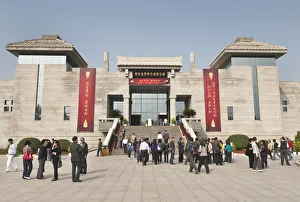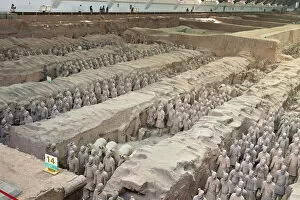Huangdi Collection
Huangdi, the legendary emperor of ancient China, holds a significant place in history. Believed to have lived around 2600 B. C
All Professionally Made to Order for Quick Shipping
Huangdi, the legendary emperor of ancient China, holds a significant place in history. Believed to have lived around 2600 B. C. , Huangdi is credited with writing the Nei Ching, an influential medical text that shaped traditional Chinese medicine for centuries. His reign marked a pivotal era in Chinese civilization. One captivating image shows Xi Ling-Shi, the empress of Huang Di, standing beside trays filled with silkworms. This remarkable woman is revered as the inventor of the loom and silk reeling. Legend has it that she discovered silk when a cocoon accidentally fell into her teacup. Her contribution revolutionized textile production and brought forth one of China's most cherished exports. Another glimpse into history takes us to Qin Shi Huangdi, the first emperor of the Qin Dynasty (259 BC - 210 BC). Known for his ambitious achievements and iron-fisted rule, he unified various warring states under his dominion to establish imperial China. His legacy includes monumental construction projects like the Great Wall and Terracotta Army. A mesmerizing photograph captures a bronze chariot drawn by four horses from approximately 3rd century BC—a testament to ancient Chinese craftsmanship and engineering prowess. The intricate details on this artifact showcase their mastery in metalwork. From legends surrounding silk production to powerful rulers shaping dynasties, Huangdi's influence resonates throughout Chinese history. Whether through advancements in medicine or grand architectural feats, his impact endures as an integral part of China's rich cultural heritage.













